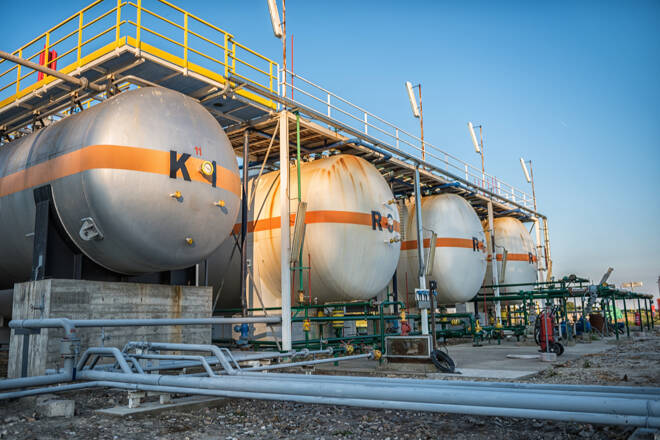Advertisement
Advertisement
EIA Reports 120 Bcf Natural Gas Build, Surpassing Forecasted Injection
By:
Key Points:
- EIA reports a 120 Bcf natural gas injection, topping estimates and reinforcing oversupply concerns for traders.
- U.S. gas storage now stands at 2,375 Bcf—90 Bcf above the 5-year average—adding pressure ahead of summer heat.
- Gas inventories are 3.9% above the five-year average, despite being 333 Bcf below last year’s inflated total.
Natural Gas Storage Build Tops Forecast, Adding Pressure to Summer Pricing
U.S. natural gas inventories rose by 120 Bcf for the week ending May 16, 2025, according to the latest EIA report—slightly above the consensus estimate of 119 Bcf. The injection lifts total storage to 2,375 Bcf, now 90 Bcf above the five-year average and within the historical range, putting a lid on near-term bullish sentiment as supply continues to outpace seasonal demand.
How Does This Injection Compare to Last Year and the 5-Year Average?
The current build exceeds both the five-year average and last year’s pace, underscoring the steady surplus heading into peak summer demand. Inventories are now 333 Bcf below the same week in 2024, but that comparison is misleading given the exceptionally high levels last year. More relevant is the 3.9% surplus to the five-year norm, which signals that injections are tracking above expectations even as weather-driven demand remains soft.
Are Regional Storage Levels Supporting the Bearish Tilt?
Yes. All major regions posted gains, with the South Central region adding 39 Bcf—a significant contributor to the national increase. Notably, nonsalt storage in that region rose by 26 Bcf, reflecting weak power burn and strong production. The Midwest and East regions followed with builds of 32 Bcf and 36 Bcf, respectively, both signaling lackluster end-user demand. The Pacific and Mountain regions posted modest gains of 7 Bcf each, but even these areas remain comfortably above five-year norms, particularly in the Mountain region, which sits 40% higher than its five-year average.
What Does This Mean for Natural Gas Bulls Watching the Weather and LNG?
With cooler-than-average temperatures in key population centers limiting early cooling demand, and LNG feedgas flows plateauing, bulls have little near-term support. Unless sustained heat emerges or LNG offtake rises meaningfully, the storage trend is likely to outpace historical averages into June. This undermines price support near $2/MMBtu, where traders are already showing signs of hesitation.
Short-Term Outlook: Bearish Bias Persists as Storage Surplus Builds
This week’s stronger-than-expected injection adds to the broader theme of oversupply, with production holding steady and demand struggling to absorb it. Unless upcoming weather models shift sharply hotter or export volumes increase, the market is likely to remain under pressure. Traders should brace for continued downside risk, especially with injections consistently topping expectations and storage surpluses widening.
About the Author
James Hyerczykauthor
James Hyerczyk is a U.S. based seasoned technical analyst and educator with over 40 years of experience in market analysis and trading, specializing in chart patterns and price movement. He is the author of two books on technical analysis and has a background in both futures and stock markets.
Advertisement
